Amol S. Joshi
FDWST: Fingerphoto Deblurring using Wavelet Style Transfer
Jul 22, 2024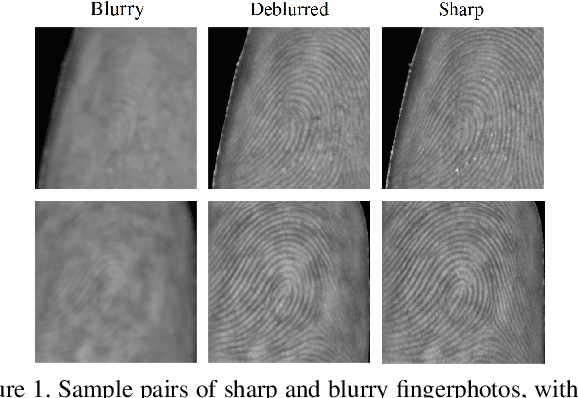

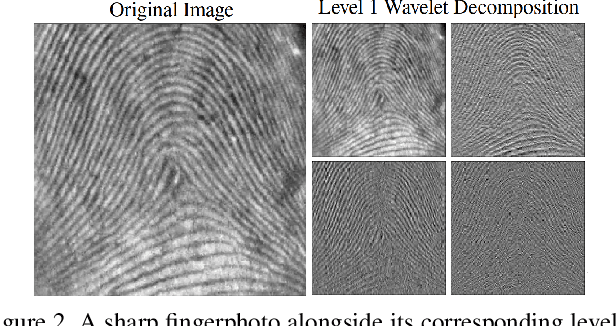

Abstract:The challenge of deblurring fingerphoto images, or generating a sharp fingerphoto from a given blurry one, is a significant problem in the realm of computer vision. To address this problem, we propose a fingerphoto deblurring architecture referred to as Fingerphoto Deblurring using Wavelet Style Transfer (FDWST), which aims to utilize the information transmission of Style Transfer techniques to deblur fingerphotos. Additionally, we incorporate the Discrete Wavelet Transform (DWT) for its ability to split images into different frequency bands. By combining these two techniques, we can perform Style Transfer over a wide array of wavelet frequency bands, thereby increasing the quality and variety of sharpness information transferred from sharp to blurry images. Using this technique, our model was able to drastically increase the quality of the generated fingerphotos compared to their originals, and achieve a peak matching accuracy of 0.9907 when tasked with matching a deblurred fingerphoto to its sharp counterpart, outperforming multiple other state-of-the-art deblurring and style transfer techniques.
UFQA: Utility guided Fingerphoto Quality Assessment
Jul 15, 2024Abstract:Quality assessment of fingerprints captured using digital cameras and smartphones, also called fingerphotos, is a challenging problem in biometric recognition systems. As contactless biometric modalities are gaining more attention, their reliability should also be improved. Many factors, such as illumination, image contrast, camera angle, etc., in fingerphoto acquisition introduce various types of distortion that may render the samples useless. Current quality estimation methods developed for fingerprints collected using contact-based sensors are inadequate for fingerphotos. We propose Utility guided Fingerphoto Quality Assessment (UFQA), a self-supervised dual encoder framework to learn meaningful feature representations to assess fingerphoto quality. A quality prediction model is trained to assess fingerphoto quality with additional supervision of quality maps. The quality metric is a predictor of the utility of fingerphotos in matching scenarios. Therefore, we use a holistic approach by including fingerphoto utility and local quality when labeling the training data. Experimental results verify that our approach performs better than the widely used fingerprint quality metric NFIQ2.2 and state-of-the-art image quality assessment algorithms on multiple publicly available fingerphoto datasets.
Synthetic Latent Fingerprint Generation Using Style Transfer
Sep 27, 2023Abstract:Limited data availability is a challenging problem in the latent fingerprint domain. Synthetically generated fingerprints are vital for training data-hungry neural network-based algorithms. Conventional methods distort clean fingerprints to generate synthetic latent fingerprints. We propose a simple and effective approach using style transfer and image blending to synthesize realistic latent fingerprints. Our evaluation criteria and experiments demonstrate that the generated synthetic latent fingerprints preserve the identity information from the input contact-based fingerprints while possessing similar characteristics as real latent fingerprints. Additionally, we show that the generated fingerprints exhibit several qualities and styles, suggesting that the proposed method can generate multiple samples from a single fingerprint.
FDeblur-GAN: Fingerprint Deblurring using Generative Adversarial Network
Jun 21, 2021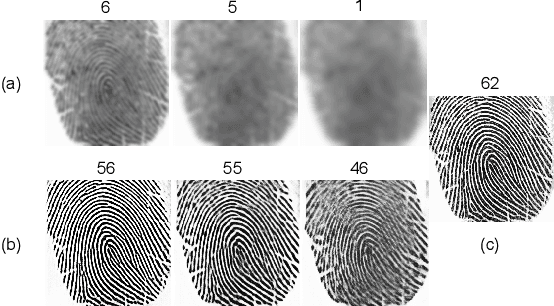
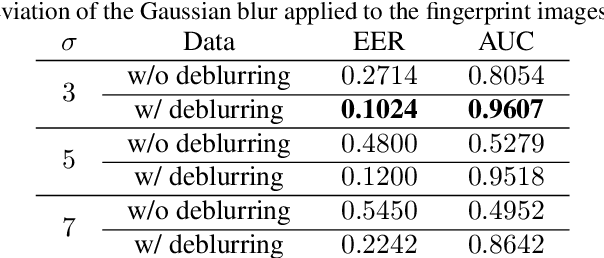
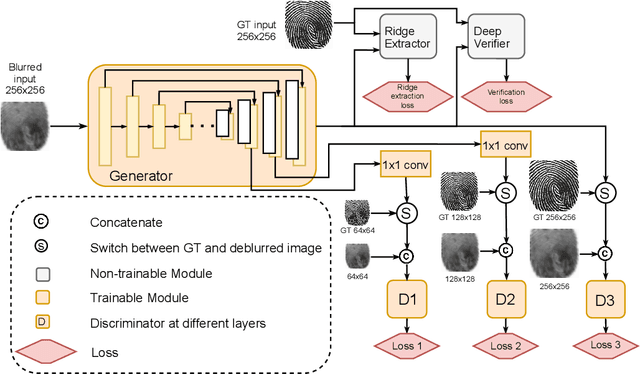
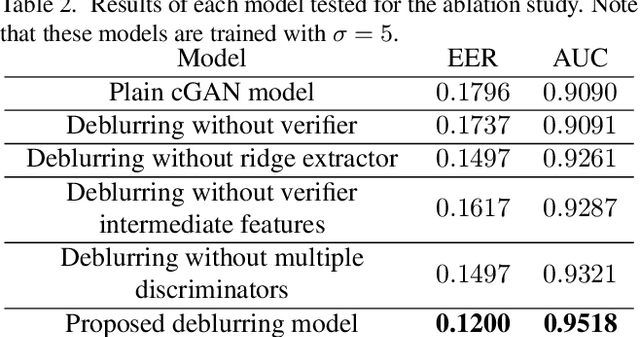
Abstract:While working with fingerprint images acquired from crime scenes, mobile cameras, or low-quality sensors, it becomes difficult for automated identification systems to verify the identity due to image blur and distortion. We propose a fingerprint deblurring model FDeblur-GAN, based on the conditional Generative Adversarial Networks (cGANs) and multi-stage framework of the stack GAN. Additionally, we integrate two auxiliary sub-networks into the model for the deblurring task. The first sub-network is a ridge extractor model. It is added to generate ridge maps to ensure that fingerprint information and minutiae are preserved in the deblurring process and prevent the model from generating erroneous minutiae. The second sub-network is a verifier that helps the generator to preserve the ID information during the generation process. Using a database of blurred fingerprints and corresponding ridge maps, the deep network learns to deblur from the input blurry samples. We evaluate the proposed method in combination with two different fingerprint matching algorithms. We achieved an accuracy of 95.18% on our fingerprint database for the task of matching deblurred and ground truth fingerprints.
 Add to Chrome
Add to Chrome Add to Firefox
Add to Firefox Add to Edge
Add to Edge